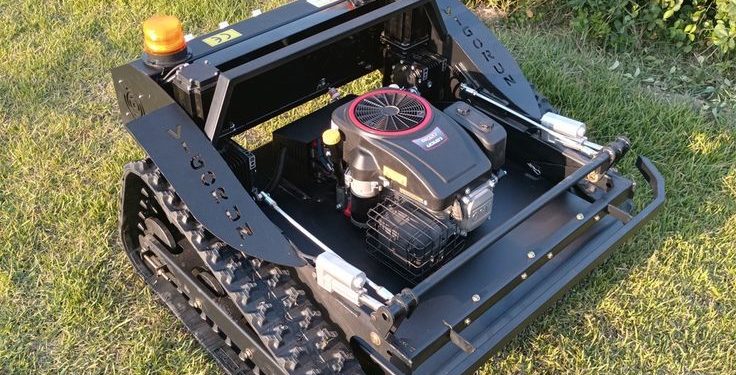For years, the idea of an autonomous lawn mower was often accompanied by the daunting task of installing a perimeter wire around the entire mowing area. This laborious setup, prone to breaks and difficult to modify, was a significant barrier for many homeowners. However, recent advancements in robotic technology have ushered in a new era of wire-free robot mowers, liberating users from the complexities of physical boundaries. These innovative machines leverage sophisticated navigation systems to define virtual mowing zones, offering unparalleled ease of installation and flexibility robot lawn mower without perimeter wire.
The Evolution of Wire-Free Technology
The shift away from perimeter wires is driven by several cutting-edge navigation technologies:
- RTK-GPS (Real-Time Kinematic Global Positioning System): This is the most prevalent and highly accurate wire-free solution. RTK-GPS uses a base station (often placed on the roof or a high point) that corrects standard GPS signals, providing centimeter-level precision. This allows the mower to know its exact location on the lawn, enabling users to define virtual boundaries, “no-go” zones, and even specific mowing patterns through a smartphone app.
- Vision-Based Navigation: Some mowers are equipped with cameras and advanced computer vision algorithms. Much like a robotic vacuum cleaner, these mowers “see” and map their environment, identifying grass, obstacles, and boundaries. This method allows for dynamic obstacle avoidance and intelligent path planning without any external setup.
- SLAM (Simultaneous Localization and Mapping): Combining data from various sensors (e.g., LiDAR, cameras, ultrasonic, IMUs), SLAM technology enables the mower to build a real-time map of its surroundings while simultaneously locating itself within that map. This is particularly effective for complex and dynamic environments.
These technologies fundamentally change the installation process, turning a day-long wiring project into a simple app-based mapping exercise.
Benefits of a Wire-Free Robot Mower
Choosing a robot mower without a perimeter wire offers numerous advantages:
- Effortless Installation: The most significant benefit is the elimination of tedious boundary wire laying, digging, or stapling. Setup primarily involves placing the charging station and mapping your lawn via an app.
- Unmatched Flexibility: Virtual boundaries can be easily adjusted, expanded, or reconfigured with a few taps on your smartphone. This is ideal if you modify your garden layout, add new flower beds, or want to change mowing zones seasonally.
- Reduced Maintenance: No physical wires mean no wire breaks due to gardening tools, burrowing animals, or ground movement. This drastically cuts down on troubleshooting and repair time.
- Precise Zone Management: These mowers often excel at managing multiple, distinct mowing zones, navigating between them seamlessly without the need for complex wire routing.
- Enhanced Anti-Theft: Many wire-free models integrate GPS tracking as part of their navigation system, providing robust anti-theft capabilities by allowing you to monitor the mower’s location in real-time.
Top Considerations When Choosing a Wire-Free Model
While highly convenient, there are specific factors to consider for wire-free robot mowers:
- GPS Signal Strength: For RTK-GPS models, a clear line of sight to satellites is crucial. Dense tree cover or tall buildings can interfere with the signal, potentially affecting accuracy.
- Initial Mapping Process: While wire-free, there’s usually an initial “drive-around” or mapping phase where you guide the mower to learn your lawn’s layout. Ensure the app interface for this is user-friendly.
- Cost: Wire-free models typically represent the premium segment of the market due to the advanced technology involved.
- Obstacle Avoidance: Look for models with sophisticated obstacle detection (cameras, radar, ultrasonic) to complement their navigation, as they won’t have a physical wire to guide them around every small item.
- Subscription Fees: Some cellular-enabled wire-free models might require an ongoing subscription for full functionality, including remote control and GPS tracking.
Conclusion
The advent of wire-free robot mowers marks a significant leap forward in autonomous lawn care. By eliminating the need for physical perimeter wires, these machines offer unparalleled ease of installation, flexibility, and advanced navigation capabilities. For homeowners seeking the ultimate hands-off experience and a consistently pristine lawn without the hassle of traditional setup, a wire-free robot mower is undoubtedly the most innovative and convenient choice on the market.










